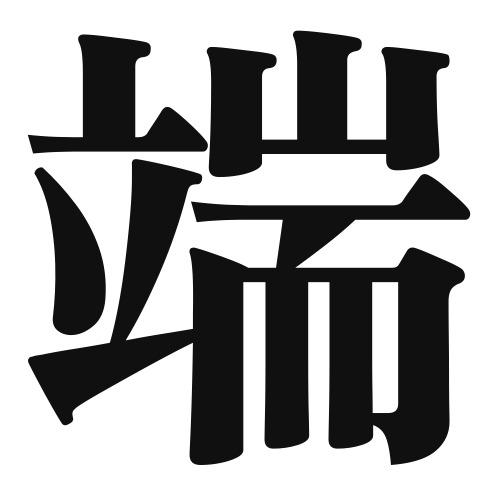1. Overview of Meaning
The kanji “端” (pronounced “han” or “tan”) generally means “edge,” “end,” or “margin.” It can refer to the physical edge of an object or the figurative edge in various contexts.
2. Formation and Radical
Formation of the Kanji: The kanji “端” is a compound character that combines elements to convey its meaning. It is formed from the radical “竹” (bamboo) and the phonetic component “旦,” which contributes to its pronunciation.
Radical: The radical of “端” is “竹,” which relates to bamboo, often symbolizing flexibility and strength.
3. Examples of Usage
Common Words and Phrases: Some frequently used words that include “端” are:
- 端末 (たんまつ, tanmatsu) – terminal
- 端っこ (はしっこ, hashikko) – edge or corner
Example Sentences in Daily Conversation:
- テーブルの端に座ってください。 (Please sit at the edge of the table.)
- この道の端には花が咲いています。 (Flowers are blooming at the edge of this road.)
4. Synonyms and Antonyms
Similar Kanji: A similar kanji is “縁” (えん, en), which means “edge” or “border” but often refers to a more abstract connection or relationship.
Antonyms: An antonym for “端” could be “中心” (ちゅうしん, chūshin), meaning “center,” which represents the middle point rather than the edge.
5. Cultural and Historical Background
Relation to Japanese Culture: The concept of “端” is significant in Japanese culture, often associated with the idea of boundaries and limits, both in physical and social contexts.
Proverbs and Idioms: One common saying is “端から端まで” (はしからはしまで, hashi kara hashi made), which means “from one end to the other,” indicating thoroughness or completeness.
